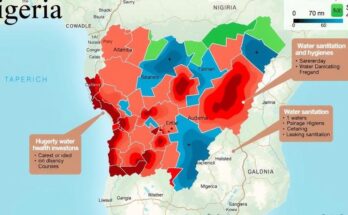Satellite data reveals alarming declines in Arctic and Antarctic sea ice, reaching a record low of 6.08 million square miles in February 2025. This melting is linked to climate change, posing risks of rising sea levels, extreme weather, and habitat loss for wildlife. Experts warn of possible permanent climate transformations unless global carbon emissions are addressed swiftly.
Recent satellite data has shown a concerning reduction in sea ice in both the Arctic and Antarctic regions. As of February 13, 2025, sea ice coverage reached an unprecedented low of 6.08 million square miles (15.76 million square kilometers). Researchers caution that this rapid melting signals a potentially dangerous shift in the Earth’s climate system, with far-reaching consequences extending beyond the polar regions.
Sea ice functions as Earth’s natural coolant by reflecting sunlight and helping to maintain global temperature balances. The melting process reveals darker ocean waters, which absorb more solar energy and contribute to further warming through the albedo effect. This self-reinforcing cycle is believed to be a significant factor in the swift decline of polar ice volumes.
Walter Meier from the U.S. National Snow and Ice Data Center has documented these alarming changes, describing the current situation in Antarctica as entering “a new regime of lower ice extents”—a concerning deviation from historical norms. A study conducted in 2024 by researchers at the Laboratoire d’Études en Géophysique et Océanographie Spatiales confirmed that rising ocean temperatures are a critical contributor to the significant losses observed in both Arctic and Antarctic ice.
The repercussions of polar ice melting are profound, leading to rising sea levels that threaten coastal cities such as New York, Miami, and Jakarta with increased flooding and extreme weather events. As Greenland and Antarctic ice sheets become smaller, millions of individuals in low-lying regions are at heightened risk of displacement.
Moreover, the deterioration of ice is disrupting vital ocean currents, especially the thermohaline circulation, which plays a crucial role in regulating global weather patterns. This disturbance could lead to intensified hurricanes, extended droughts, and erratic monsoons, exacerbating climate instability globally. Additionally, wildlife is facing challenges due to habitat loss, with species like polar bears, seals, and walruses experiencing diminished hunting and breeding grounds, while Antarctic penguin populations face habitat depletion.
Satellite imagery has confirmed this trend, illustrating a grim outlook for polar ice levels. Although there was a slight recovery on February 15, 2025, with coverage reaching 6.11 million square miles (15.84 million square kilometers), these levels remain significantly lower than historical averages. Observations since 2016 indicate a dramatic and persistent decline in Antarctic sea ice that has not shown signs of recovery, pointing towards a potential permanent shift in climate.
The immediate future will play a pivotal role in determining whether polar ice can recover, or if this drastic trend becomes the new status quo. Scientists are vigilantly observing how warmer ocean temperatures and altered weather patterns influence ice refreezing processes. Experts concur that alleviating global carbon emissions is essential for mitigating this trend, emphasizing that the future of Earth’s polar ice hinges on the timely actions of nations to reduce greenhouse gas emissions and embrace clean energy solutions.
In summary, the record lows of Earth’s polar ice present urgent challenges that threaten global environmental stability, wildlife, and human populations in coastal areas. The dual phenomena of rapid ice melting and climate change are intertwined, creating a rapidly shifting landscape that requires immediate action. The responsibility lies with global leaders to address carbon emissions and seek sustainable energy practices to restore balance to our planet’s climate system.
Original Source: dailygalaxy.com




